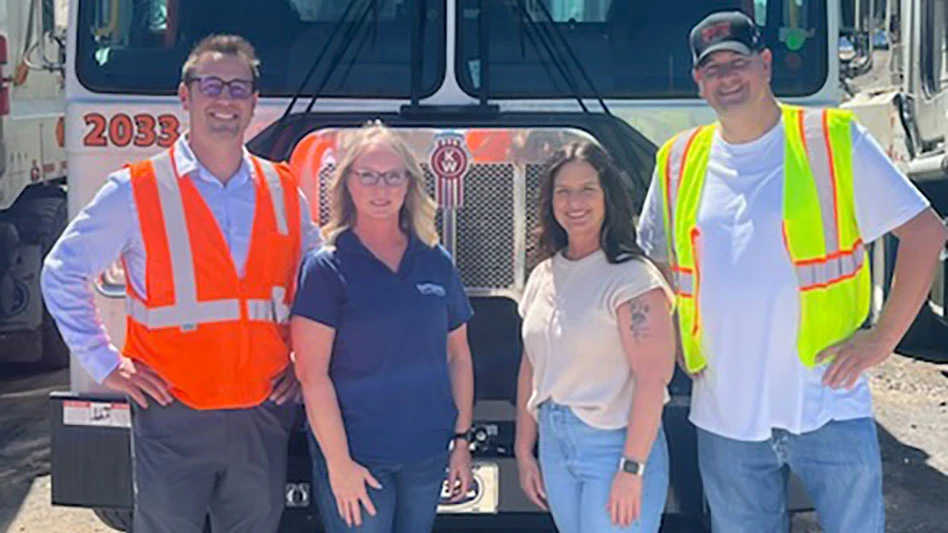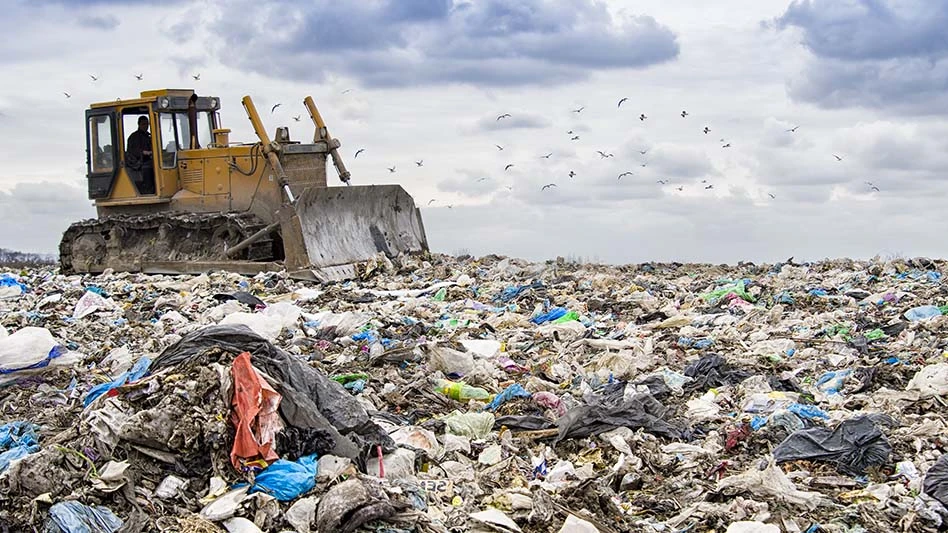
At transfer stations and material recovery facilities (MRFs), a great deal of material comes in and out each day, and finding software that reliably reports weights and other data is critical.
Andrea Rodriguez, director of engineering at FCC Environmental Services, which has North American offices in Houston, helped design a MRF in Dallas that opened in 2017. She says user-friendliness and the ability to customize data are important factors to consider when choosing software to deliver raw data from scales to administrative offices.
“This type of software can do everything from weighing and giving you data analysis on technical things to [delivering data for] your financial statements, your invoices and everything else you may want,” she says.
The material entering the MRF can vary throughout the day, she adds. While haulers could bring in single-stream recycling loads, commercial customers could arrive with presorted plastics or old corrugated containers.
“User-friendliness itself is really important because the rotation of labor in this industry is very big,” she says. “You want to make sure that you can train someone on this system in less than an hour.”
MRFs the firm designed in Dallas and Houston use a product that “aligns very well with our needs. It’s a friendly user interface, which is also a very important thing for us,” she says.
Rodriguez says the software uses drop-down menus in its interface, and it’s difficult to make mistakes when recording data.
When a truck enters, she says, “You just need to enter who the customer is and the material … and it’s very easy because everything is already in the system.”
In addition to weight, truck numbers, customer identification and material type are some of the other data points the software can track and report. Rodriguez says the ability to customize is important because different trucks could carry different materials, and their contracts with MRF owners could vary, as well.

Customer support and training
In addition to usability and accessibility, Rodriguez says MRF operators should seek software companies that provide strong training and customer support because even if the software malfunctions, incoming and outgoing traffic continues.
Shortly after opening the Dallas MRF, she says the facility’s network was running on a WiFi hotspot and transitioned to fiber optic cable through AT&T. That transition did not go as planned, but the software company came out quickly and helped fix the problem.
Rodriguez says FCC’s contract with the software company stipulates that the firm will resolve any problems within 24 hours, and she advises others looking for weighing software to seek a similar level of technical support.
Training at FCC’s Houston MRF, which opened in 2019, took a single day.
The newer version of the software in Houston includes kiosks where drivers can enter data. As a backup measure, a camera continuously captures data from labels on trucks.
Another choice MRF operators must consider is whether to use a kiosk system where drivers enter data themselves or a radio frequency identification (RFID) system, Rodriguez says.
Cardinal/Detecto Scale, for example, says systems exist where a driver scans an RFID-enabled badge in front of a scanner. The Webb City, Missouri, company also says some systems offer vehicle-mounted RFID tags on truck fenders that can be scanned continually.
In certain situations, Rodriguez says the kiosk systems are more reliable but adds that opinions vary. For instance, she says sun glare can make it difficult for the RFID system to read data, and dirt also can obscure labels.
Rodriguez says one of the first factors she considers when choosing software is the level of customer support because the MRF operates 20 hours a day, and downtime is difficult to manage.
The second is whether the weighing software can integrate with the facility’s existing system.
The larger context
The purpose of a given scale within the larger system is another factor to consider when shopping for software and software interfaces, says Evan Schwartz, chief software enterprise architect for Ireland-based AMCS Group, with North American headquarters in Boston.
He explains that scales at some facilities are manned instead of automated because they receive unscheduled deliveries from unfamiliar vendors.
From a manned scale designated for unfamiliar drivers and loads to the fastest, most-automated scale software interface, Schwartz says facility owners could choose among a spectrum of automation levels based at least in part on use.
“In varying degrees, there are situations where I have to ask the driver everything, and there’s no way to validate it—that’s at the low end [of automation],” he says.
Depending on the need for detail about the loads beyond the weight, Schwartz says interfaces have drop-down menus that prompt drivers to input information about their identities and the materials they are carrying to fully automated systems designed for drivers who visit the facility regularly.
With fully integrated driver-assisted terminals (DATs), a driver gives the interface a number that identifies the truck. Schwartz says some systems can identify the truck using a mobile device the driver carries.

“It just depends on what degree of automation you want to get to,” he says. “Within that, you have the vertical layers of automation: Do I want the driver to manage the DAT? Do I want to do it fully automated, or do I need a manned scale? That’s you managing and measuring your own level of risk and efficiencies.”
A facility operator might need a fast system if it has heavy traffic and drivers often are lined up waiting to enter the scale. Schwartz says larger facilities could require multiple scale lanes, including one with a quick DAT system and one that is manned. Generally, he says, the speed of a system is the most sought-after factor because it can help avoid bottlenecks at the facility.
“If I can get someone in and out fast, I’m going to have a safer facility; I’m going to have a more efficient facility; I’m going to have higher revenue, and I’m going to have lower costs,” he says.
In some cases, Schwartz says the fastest scale weighing system might not be the right answer for a facility because it could create a bottleneck in other areas, such as the tipping area.
“Our engagement involves the entire … operation system … it’s the accounting, it’s the sales, it’s the finished good material planning, the demand planning,” he says. “It also gets into yard management; it gets into just logistics; it gets into truck routing [and] dispatch. It’s a womb-to-tomb full enterprise system.”

Explore the November December 2023 Issue
Check out more from this issue and find your next story to read.
Latest from Waste Today
- Crystal Clean launches compact PFAS remediation solution
- Teamsters escalate Republic Services strike
- LRS diverts 330,000 tons of recyclable material in 2024
- Sonrai Systems prevails in lawsuit
- Beyond the Bag Initiative releases study on single-use bag laws
- Composting pilot comes to Prairie Village, Kansas
- Republic Services says Teamsters mediation to resume Tuesday
- Reworld partners with Mystic Aquarium





